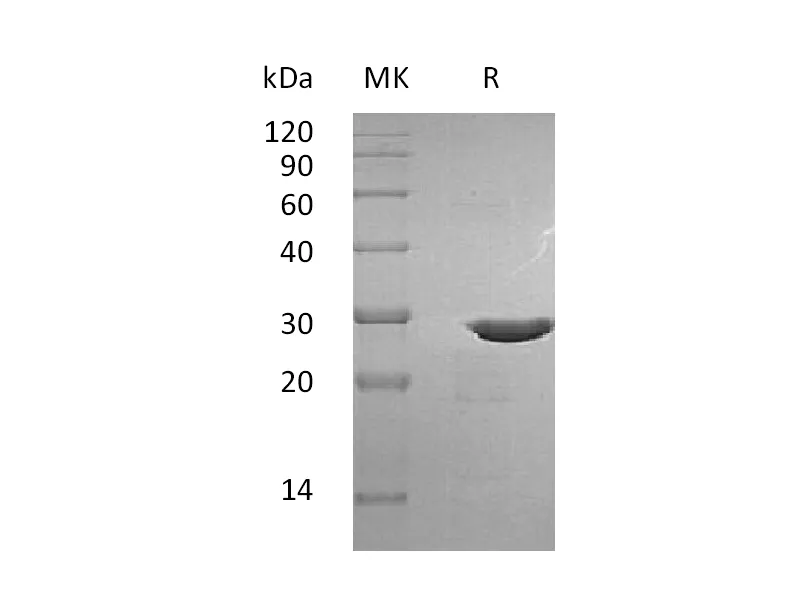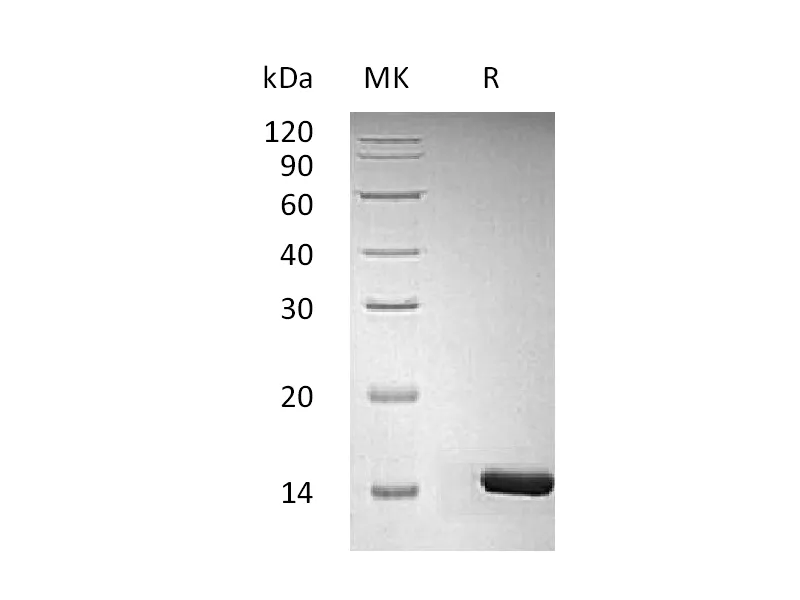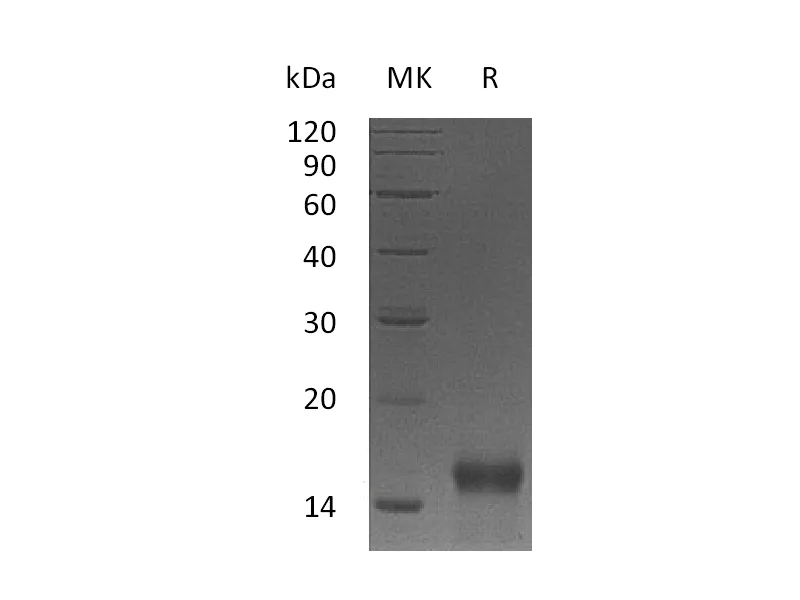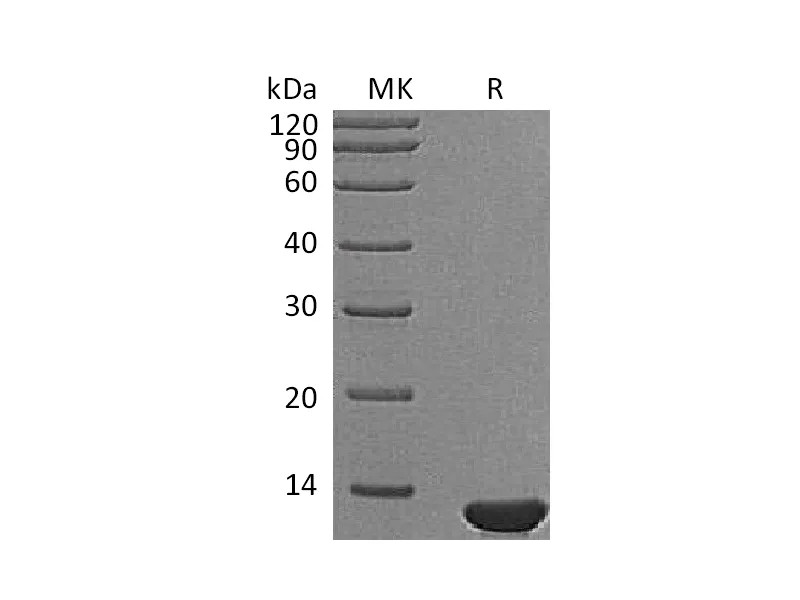Alternative Names
Tumor Necrosis Factor Receptor Superfamily Member 11B; Osteoclastogenesis Inhibitory Factor; Osteoprotegerin; TNFRSF11B; OCIF; OPG
Background
TNFRSF11B is a secreted protein, containing 2 death domains and 4 TNFR-Cys repeats. TNFRSF11B is a decoy receptor for the receptor activator of nuclear factor kappa B ligand (RANKL). By binding RANKL, TNFRSF11B inhibits nuclear kappa B (NF-κB) which is a central and rapid acting transcription factor for immune-related genes, and a key regulator of inflammation, innate immunity, and cell survival and differentiation. TNFRSF11B levels are influenced by voltage-dependent calcium channelsCav1.2. TNFRSF11B can reduce the production of osteoclasts by inhibiting the differentiation of osteoclast precursors (osteoclasts are related to monocytes/macrophages and are derived from granulocyte/macrophage-forming colony units (CFU-GM)) into osteoclasts and also regulates the resorption of osteoclasts in vitroand in vivo. TNFRSF11B binding to RANKL on osteoblast/stromal cells, blocks the RANKL-RANK ligand interaction between osteoblast/stromal cells and osteoclast precursors. This has the effect of inhibiting the differentiation of the osteoclast precursor into a mature osteoclast.
Note
For Research Use Only , Not for Diagnostic Use.




